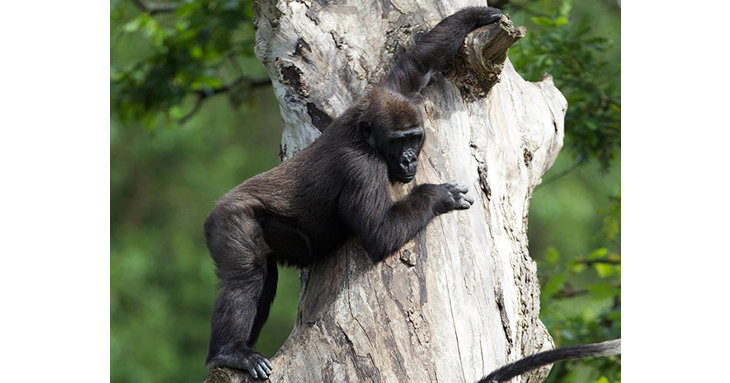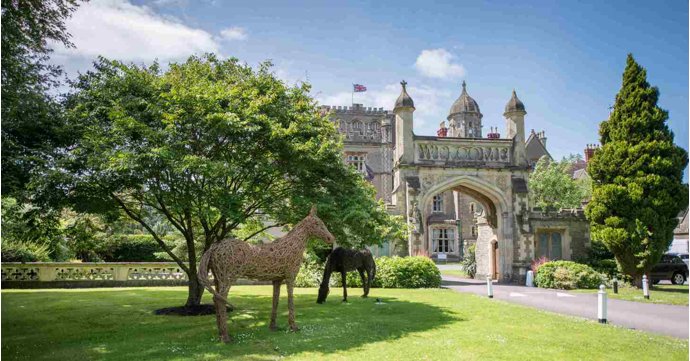Bristol Zoo is set to be home to some of the most endangered animals in the world when it opens at the Wild Place Project in 2024.
With the conservation of species and habitats of utmost importance to Bristol Zoological Society, 78 per cent of the species at the new Bristol Zoo will be linked to the society’s vital conservation work, which is more than any other zoo in the UK.
The new attraction will have a central African forest habitat, where the gorilla troop that currently resides at Bristol Zoo Gardens will live, alongside a new group of endangered cherry-crowned mangabey monkeys – with the immersive woodland exhibit reflecting the primates’ natural habitat as closely as possible.
The forest will also be home to endangered African grey parrots; critically endangered slender-snouted crocodiles; and an extremely rare species of West African fish that can be viewed in a brand-new underwater area.
The new Bristol Zoo will also have a conservation breeding centre to house a variety of animals categorised as ‘critically endangered’ or ‘extinct in the wild’ on the International Union for Conservation of Nature Red List of Threatened Species, with the aim of potentially reintroducing them into the wild.
Visitors will be able to view the indoor climate-controlled enclosures, biosecure breeding rooms and outdoor ponds and aviaries, with animals on the breeding programme including rare tortoises and turtles; Socorro doves, which are extinct in the wild; Henkel’s leaf-tailed geckos; and Madeiran land snails.
There will also be a conservation learning centre and conservation medicine centre, providing purpose-built facilities for degree students in partnership with Bristol universities.
Alongside the new exhibits, many of Bristol Zoo’s most popular exhibits will be recreated at the Wild Place Project, including the award-winning Bear Wood and Gelada Rocks.
Director of conservation and science at Bristol Zoological Society, Brian Zimmerman, said: ‘Our new Bristol Zoo will set the standard for a modern, forward-looking zoo for the 21st century.
‘We will lead the way in terms of conservation within a zoo, with at least 78 per cent of our animals having a link to conservation when the first phase of development is complete and more than 90 per cent by our bicentenary in 2035. The exhibits at the new Bristol Zoo will be larger and reflect the surroundings in which animals would live in the wild.
‘The conservation breeding centre will also include threatened species from the UK, such as white-clawed crayfish, and will showcase the important captive breeding work we do with a range of rare species.’
Chief executive of Bristol Zoological Society, Dr Justin Morris, added: ‘The new Bristol Zoo will ensure future generations of children can come face-to-face with amazing animals in nature, and that our charity continues its critical conservation and education work, to protect at-risk species and habitats.
‘We want to make sure the animals we work with are those for whom we can make the biggest difference and link to those that we are working with in the wild. We also plan to add a number of new species and look forward to being able to share exciting animal updates on this in the coming months.’
The public consultation on Bristol Zoo’s plans is set to take place in early February 2022, with a planning application due to be made in spring.


















